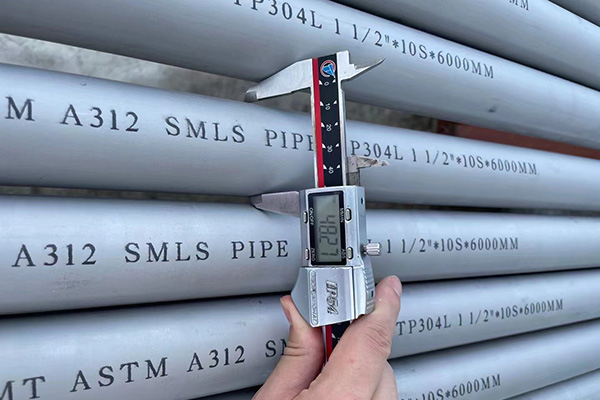
SEAMLESS VS WELDED STAINLESS STEEL PIPES TUBE

Stainless steel tube is one of most versatile metal alloys used in manufacturing. Tubing is available in two types: seamless and welded. The application of the product is the primary factor in deciding whether to use welded or seamless tubing. When choosing between the two, keep in mind first that the tubing needs to be compliant with the project specifications. Secondly, the tubing should meet the conditions under which it will be used.
Manufacturer of Seamless Pipe Tube
Seamless steel pipes are manufactured from a billet. The billet is heated, stretched, and then pushed or rolled onto a form or frame until it becomes hollow.
The seamless steel pipes (ASTM or API 5L), take their shape after passing through a perforated tubing.
Hot rolled seamless pipe is made by forging, perforating rolling and shaping. Tubing manufactured by industrial extrusion is used for thick-walled seamless pipes and large diameter tubes.
Cold drawn seamless steel tubes, on the other hand use cold-drawn technologies. This is ideal for pipes with a small diameter or thin walls, as they have lower material strength. This is useful when you want to create a pipe that is stunning with a smooth interior surface. The seamless steel pipes are only able to be rolled using low alloy, carbon structural steel or alloy structures during the extrusion.
Manufacturer of Welded Pipe Tube
Steel plates and strips are used to make the majority of welded steel pipe. The steel coils and loops are moved with the proper gauge thickness to create these strips and plates. The flat material is measured and then cut to desired lengths.
The first step is to bend the steel plate. It can then be welded into the desired shape, such as a rectangle, square or circle. A powerful energy source is used to weld the metallic pipe. Some pipes can be welded with filler materials. The heat treatment process is required for most welded steel tubes.
Always, the joints are the weakest part of a steel welded pipe. Welding is done by robots in production lines that are automated, such as those in the automotive industry. Human labor is the best option for welds of stronger steel pipes, as seen in aerospace construction.
How to Choose Between Seamless & Welded
The advantages and disadvantages of seamless vs. welded pipes and tubes
1. Seamless Pipe
Seamless pipe tubes are homogeneous. They have superior strength, corrosion resistance and can withstand greater pressures than welded pipe tubes. They are therefore more suitable for harsh environments and critical applications. However, they come at a cost.
Advantages:
Thicker diameter
No welds
Corrosion Resistance
Better Ovality
Durable
Improved Pressure Capacity
No fusion metals are used
Disadvantages:
Due to manufacturing problems, the length of some products is reduced.
Size restriction for nominal sizes of less than 24 inches
Costly
Extrusion is a rough process
Uneven wall thickness
Applications:
Control lines for oil and gas
Chemical injection lines
Below-sea safety valves
Steam and heat trace bundles for chemical processing plants
Fluid and Gas Transfer
2. Welded Tube
Welded tube is less expensive than seamless tubing because the manufacturing process for welded tubing uses a simpler method. Like seamless tubing, it is readily available in long continuous lengths. Both welded and seamless tubes can be manufactured in standard sizes with the same lead time. Smaller manufacturing runs can offset the cost of seamless tubing. If you want to order custom-sized tubing, the cost is higher.
Advantages:
The length of the product can be extended
Cost-effective
No size restrictions
Smooth surfaces
Easy to find
Shorter delivery time
Thinner walls
Lighter in weight
Tighter tolerance
Consistency of wall thickness
Disadvantages:
Welds can be prone to corrosion
Only 20% of the weight can be supported by this product
Tested before use
Poor ovality
Applications:
Architecture
Food and beverage industries
Automotive industry
Aerospace construction
Pharmaceuticals
Marine and fishing
Construction and mining
Pipelines
Name: Acewell Metail
phone:86-18158892901
Whatsapp:8618158892901
Email:[email protected]
Add:NO.18 Huaye Avenue, Zhenyang Industrial Park